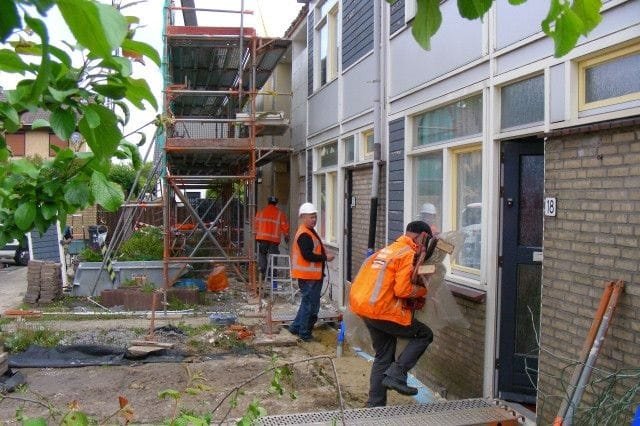As cities prioritize greener infrastructure, retrofitting older buildings for energy efficiency has become essential. However, balancing sustainability with architectural preservation presents significant challenges. Ballast Investments, a real estate investment firm managing a $2 billion portfolio, highlights how adaptive reuse can successfully merge modern efficiency with historic integrity. Many historic properties constructed with outdated materials and techniques require innovative solutions to incorporate energy-efficient technologies while preserving their original character.
Thoughtful planning, advanced retrofitting methods and sustainable design strategies ensure these buildings remain functional, environmentally responsible and true to their heritage.
Structural and Material Limitations
One of the primary challenges in retrofitting older buildings is dealing with structural and material constraints. Many historic buildings were constructed before modern insulation standards and energy-efficient materials existed. Thick masonry walls, traditional wooden frames and outdated HVAC systems can limit the effectiveness of conventional energy upgrades. Replacing or reinforcing these elements while ensuring the building’s stability demands specialized expertise and customized solutions.
Preserving Architectural Integrity
Historic buildings often hold cultural and aesthetic significance, making their preservation a critical aspect of any retrofitting project. Regulatory agencies and preservation societies impose strict guidelines to ensure that modifications do not alter key architectural features. Energy upgrades such as installing solar panels, double-glazed windows or high-efficiency HVAC systems must be carefully designed to blend seamlessly with the building’s original aesthetics.
Regulatory and Compliance Barriers
Retrofitting historic buildings is often subject to extensive regulations at local, state and federal levels. Compliance with building codes, zoning laws and preservation standards can slow down projects and increase costs. Permitting requirements may demand extensive documentation and approvals, further complicating timelines. Navigating these regulatory hurdles requires collaboration between architects, engineers and preservation authorities.
Engaging with local historic preservation boards early in the planning process can help streamline approvals and avoid costly design revisions. Adaptive reuse projects may also qualify for specialized grants or tax incentives that offset compliance costs, making them more financially feasible. In some cases, creative design solutions—such as reversible modifications or non-invasive retrofits—allow developers to meet regulations without compromising the building’s integrity. Successfully navigating these challenges ensures that historic buildings can be preserved while being adapted for modern use, benefiting both developers and communities.
Cost and Financial Challenges
Energy-efficient retrofitting of historic buildings often comes with higher upfront costs compared to new construction. Custom materials, specialized labor and compliance with preservation requirements contribute to increased expenses. While incentives such as tax credits, grants and subsidies are available, securing funding can be complex. Property owners and developers must assess long-term savings on energy costs versus the initial investment required for retrofitting.
Compatibility of Modern Technologies
Integrating contemporary energy-efficient technologies into older buildings can be complex due to incompatible systems and design limitations. Traditional buildings may not support the installation of modern insulation, energy-efficient lighting or renewable energy systems without significant modifications. Engineers must develop innovative solutions, such as using non-invasive insulation techniques, retrofitting mechanical systems and optimizing passive energy strategies to improve efficiency without compromising the building’s structural integrity.
In some cases, adaptive reuse projects incorporate geothermal heating and cooling systems, which provide energy efficiency without requiring major structural changes. Advanced ventilation systems, such as Energy Recovery Ventilators (ERVs), help maintain indoor air quality while reducing energy consumption. LED lighting with adaptive controls allows for modern illumination while preserving the aesthetics of historic interiors. Structural reinforcements, including carbon fiber or lightweight steel supports, can strengthen older buildings without adding excessive weight or altering their original design.
Additionally, integrating green roofs and vertical gardens enhances insulation and reduces urban heat island effects. Smart building automation further improves energy performance by adjusting climate controls based on real-time occupancy data. Many cities offer incentives for energy-efficient retrofits, making these upgrades more financially viable for developers. By combining thoughtful planning with cutting-edge technology, adaptive reuse projects can successfully balance sustainability, functionality and architectural preservation.
Impact on Building Performance and Occupant Comfort
Retrofitting projects must balance improving energy efficiency and ensuring occupant comfort. Some historic buildings rely on natural ventilation, thick walls and traditional shading techniques to contribute to thermal regulation. Introducing new insulation or mechanical systems without considering these existing passive design elements can result in unintended consequences, such as humidity issues or reduced air circulation. Thoughtful integration of modern and traditional energy strategies is essential for optimizing building performance.
Greg MacDonald, Ballast Investments CEO and Co-Founder, states, “Technology has become an indispensable tool for sustainable property management. The potential for ‘smart buildings’ to one day fully integrate energy management systems makes it an exciting time for investors focused on sustainable initiatives.” This perspective underscores how advancing technology is playing a crucial role in making retrofitting projects more efficient and financially viable.
Future Trends in Retrofitting Historic Buildings
As technology advances, new solutions are emerging to facilitate the energy-efficient retrofitting of older buildings. Innovations such as smart climate control systems, dynamic insulation materials and renewable energy storage solutions are improving compatibility with historic structures. Additionally, advancements in 3D scanning and digital modeling are aiding preservationists and engineers in designing retrofit solutions that minimize disruption to original architectural elements.
High-performance window retrofits and solar-integrated roofing systems are also helping to improve energy efficiency without compromising a building’s historical integrity. AI-driven energy management platforms allow property owners to monitor and optimize energy consumption in real-time, reducing long-term operational costs. Prefabricated modular upgrades, such as insulated wall panels and plug-and-play HVAC systems, enable faster, less invasive retrofits. Smart water management systems further enhance sustainability by reducing waste and optimizing resource use.
These technological advancements not only make adaptive reuse projects more feasible but also contribute to long-term resilience and lower environmental impact. As cities continue to prioritize sustainability, integrating these innovations into adaptive reuse projects will be essential for creating smarter, greener urban spaces.
Retrofitting older buildings for energy efficiency is a complex but necessary endeavor as cities strive to meet sustainability goals. While challenges such as structural limitations, regulatory barriers and financial constraints persist, innovative design approaches and emerging technologies offer viable solutions. By balancing energy efficiency with historic preservation, retrofitting projects can create environmentally responsible, resilient and culturally significant buildings for future generations.



